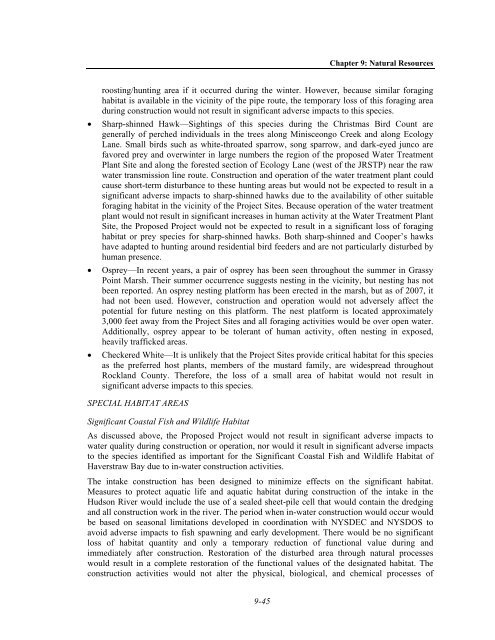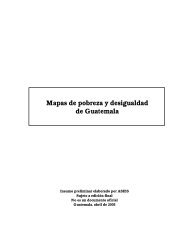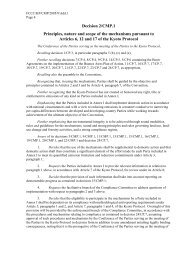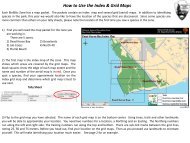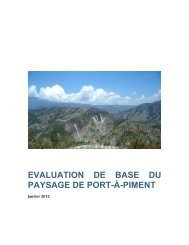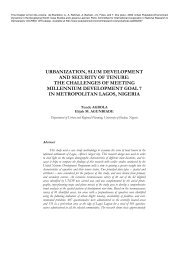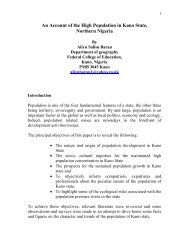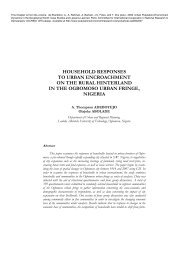Haverstraw Water Supply Project DEIS
Haverstraw Water Supply Project DEIS
Haverstraw Water Supply Project DEIS
Create successful ePaper yourself
Turn your PDF publications into a flip-book with our unique Google optimized e-Paper software.
Chapter 9: Natural Resourcesroosting/hunting area if it occurred during the winter. However, because similar foraginghabitat is available in the vicinity of the pipe route, the temporary loss of this foraging areaduring construction would not result in significant adverse impacts to this species.• Sharp-shinned Hawk—Sightings of this species during the Christmas Bird Count aregenerally of perched individuals in the trees along Minisceongo Creek and along EcologyLane. Small birds such as white-throated sparrow, song sparrow, and dark-eyed junco arefavored prey and overwinter in large numbers the region of the proposed <strong>Water</strong> TreatmentPlant Site and along the forested section of Ecology Lane (west of the JRSTP) near the rawwater transmission line route. Construction and operation of the water treatment plant couldcause short-term disturbance to these hunting areas but would not be expected to result in asignificant adverse impacts to sharp-shinned hawks due to the availability of other suitableforaging habitat in the vicinity of the <strong>Project</strong> Sites. Because operation of the water treatmentplant would not result in significant increases in human activity at the <strong>Water</strong> Treatment PlantSite, the Proposed <strong>Project</strong> would not be expected to result in a significant loss of foraginghabitat or prey species for sharp-shinned hawks. Both sharp-shinned and Cooper’s hawkshave adapted to hunting around residential bird feeders and are not particularly disturbed byhuman presence.• Osprey—In recent years, a pair of osprey has been seen throughout the summer in GrassyPoint Marsh. Their summer occurrence suggests nesting in the vicinity, but nesting has notbeen reported. An osprey nesting platform has been erected in the marsh, but as of 2007, ithad not been used. However, construction and operation would not adversely affect thepotential for future nesting on this platform. The nest platform is located approximately3,000 feet away from the <strong>Project</strong> Sites and all foraging activities would be over open water.Additionally, osprey appear to be tolerant of human activity, often nesting in exposed,heavily trafficked areas.• Checkered White—It is unlikely that the <strong>Project</strong> Sites provide critical habitat for this speciesas the preferred host plants, members of the mustard family, are widespread throughoutRockland County. Therefore, the loss of a small area of habitat would not result insignificant adverse impacts to this species.SPECIAL HABITAT AREASSignificant Coastal Fish and Wildlife HabitatAs discussed above, the Proposed <strong>Project</strong> would not result in significant adverse impacts towater quality during construction or operation, nor would it result in significant adverse impactsto the species identified as important for the Significant Coastal Fish and Wildlife Habitat of<strong>Haverstraw</strong> Bay due to in-water construction activities.The intake construction has been designed to minimize effects on the significant habitat.Measures to protect aquatic life and aquatic habitat during construction of the intake in theHudson River would include the use of a sealed sheet-pile cell that would contain the dredgingand all construction work in the river. The period when in-water construction would occur wouldbe based on seasonal limitations developed in coordination with NYSDEC and NYSDOS toavoid adverse impacts to fish spawning and early development. There would be no significantloss of habitat quantity and only a temporary reduction of functional value during andimmediately after construction. Restoration of the disturbed area through natural processeswould result in a complete restoration of the functional values of the designated habitat. Theconstruction activities would not alter the physical, biological, and chemical processes of9-45


